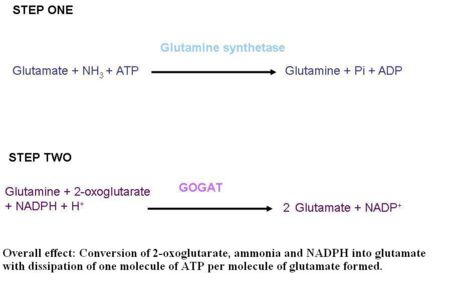Biosynthesis

Biosynthesis is an essential stage in metabolism where building blocks used in the synthesis of cell macromolecules and membranes are produced from simpler precursors. It is preceded by a fueling (catabolism stage and followed by polymerisation and assembly of building blocks into cell components.
Biosynthesis, takes place within living cells and is generally catalysed by enzymes. The reactions are generally organised in sequential steps called biosynthetic pathways, which branch from a metabolic network known as central metabolism.
The prerequisites for biosynthesis are:
- Thirteen precursor carbon-skeletons
- Chemical energy (usually in the form of ATP)
- Enzyme catalysts
- Reduction equivalents (in the form of hydrogen carried on the coenzymes NADH, NADPH and others)
- Nitrogen in the form of ammonia.
- Reduced forms of sulfur for some amino acids
Important and widely known products of biosynthesis include amino acids, nucleotides, and , vitamins but all components of living beings depend on this process. Biosynthesis is harvested by the biotechnology industry to manufacture flavoring compounds such as mono sodium glutamate and lysine, vitamins, and therapeutic proteins such as insulin and growth hormones.
Representative biosynthetic pathway
The amino acid glutamate is a common component of proteins. Glutamate is able to transfer its amino group to many different nitrogen containing compounds in the cell, an thus glutamate formation is a major contributor to nitrogen assimilation in many organisms
Glutamate can be formed inside cells by a short pathway of two enzyme catalysed steps that well illustrates the features of a typical biosynthetic pathway.
For many microrganisms, this pathway is an important physiological adaptation for survival when ammonia is at present in the environment at growth limiting concentrations, as it enables avid capture of ammonia at low concentrations for subsequent use in many different biosynthetic products.
The inputs of the pathway are carbon from 2-oxoglutarate (a metabolite in the TCA cycle portion of central metabolism), NADH (hydrogen carrier co-enzyme) and ATP.
Glutamine is an intermediate in the pathway.
Although the pathway seems to start with its product glutamate , the second step generates two glutamate molecules. Thus the net effect is conversion of an organic acid precursor with assimilation of nitrogen into an amino acid monomer, reduction of the precursor, wastage of ATP, and creation of a monomer that can used in protein synthesis.
The first step in glutamate pathway, enzyme catalysed synthesis of glutamine, is actually a one step biosynthetic pathway also used for glutamine biosynthesis. Glutamine, like glutamate, is an amino acid monomer used for building proteins.
